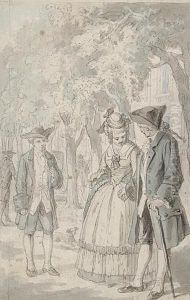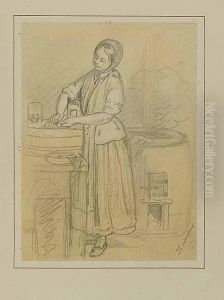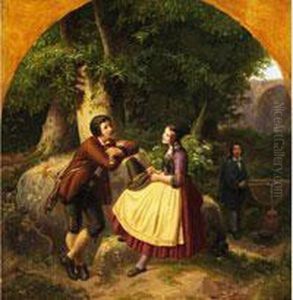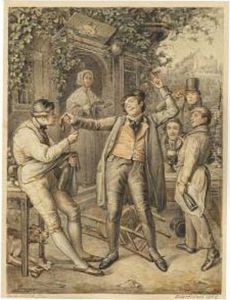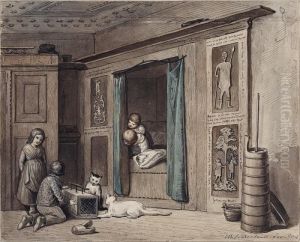Johann Baptist W.A. Sonderland Paintings
Johann Baptist W.A. Sonderland was a German artist and illustrator known for his detailed engravings and illustrations. Born on November 11, 1805, in Düsseldorf, Germany, Sonderland was a part of the 19th-century art movement in Germany, which was characterized by a strong emphasis on romanticism and the depiction of historical and mythological subjects.
Sonderland received his artistic training at the Düsseldorf Academy of Arts, which was one of the leading art schools in Germany at the time. The Academy was known for its focus on academic painting and it attracted students from across Europe. Under the tutelage of renowned teachers, Sonderland honed his skills in engraving and illustration, which would become the hallmark of his artistic career.
Throughout his life, Sonderland produced a wide range of works, including illustrations for books, journals, and almanacs. He was particularly adept at capturing the essence of a story in a single image, which made his illustrations highly sought after by publishers. His style was often characterized by a meticulous attention to detail, a hallmark of the engraving medium, and his ability to convey complex emotions and narratives.
One of Sonderland's most notable contributions to the art world was his collaboration with writers and poets of his time. He illustrated works by famous authors such as Johann Wolfgang von Goethe, providing visual representations that complemented and enhanced the literary experience. This interdisciplinary approach to art and literature was quite popular in the 19th century and allowed artists like Sonderland to reach a wider audience.
Sonderland's work was also influenced by the political and social changes occurring in Germany and Europe during his lifetime, including the revolutions of 1848. Although not overtly political, his art sometimes reflected the zeitgeist of his era, capturing the spirit of the times in a subtle yet evocative manner.
Johann Baptist W.A. Sonderland's death came on September 21, 1878, in his hometown of Düsseldorf. His contributions to the field of illustration and engraving have left a lasting legacy, with his works continuing to be appreciated for their technical skill and their ability to convey the richness of 19th-century German culture and literature.
